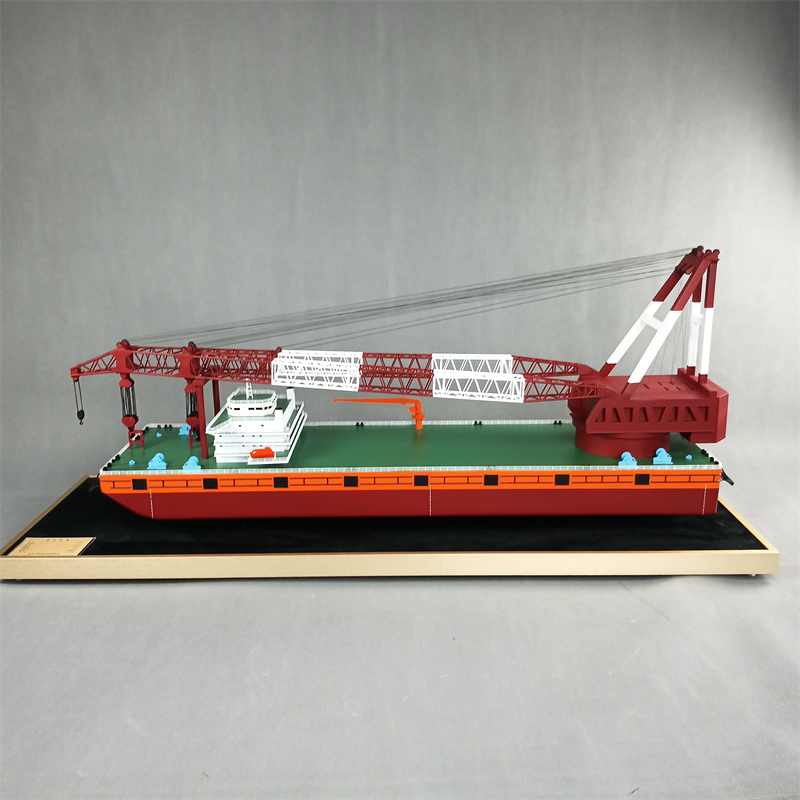A hajómodellek építése során több anyagot használnak, amelyeket bizonyos tulajdonságok, például szilárdság, súly, befejezés könnyűsége stb. alapján választanak ki. A műanyag, fém és gyanta néhány példa ezekre a fő anyagokra. Mindegyik valami mást hoz a különböző típusú hajókhoz.

Plasztik: Forgó és könnyű
A műanyagok szintén széles körben használt anyagok hajómódell , és a műanyag injekciós öntési technológia megjelenése lehetővé tette a tökéletesen illeszkedő összetett alkatrészek gyártását. A műanyag modellek általában könnyűek más modellekhez képest; így kényelmesebbek a szállításra vagy kiállításra.
A műanyag előnyei:
Olcsó: A műanyag hajómodellek olcsóbbak, mint a fémből készült modellek, így a legjobban a korlátozott költségvetéssel rendelkező emberek számára alkalmasak.
Hordozható: Ez azt jelenti, hogy a műanyag nem olyan nehéz, mint más anyagok, így nagyobb modelleket lehet készíteni.
A tervezés sokfélesége: A műanyagok használata lehetővé teszi a nagy mennyiségű alkatrész gyártását, ami több modellben is hasonlóvá teszi őket.
Metal: Erősség és realizmus
A szerkezeti stabilitás javítása vagy különleges részletek, például horgonyok, korlátok és csavarok hozzáadása érdekében a hajómodellek gyakran használnak olyan fémeket, mint a cinkötvözetek és az alumíniumötvözetek.
A fém előnyei:
Erőssége: Fő szerepe, hogy további támogatást nyújtson a nagy méretű összetett modellek számára, hogy hosszú idő elteltével is stabilak legyenek.
Részletek: Finom fém darabok jobb eredményeket hozhatnak, mint a műanyag, amely gyakran túl vastag.
Súly: A fémszerszámú szerkezet nagyobb súlyt jelent, így nagyobb a realismusa és a szilárdsága, különösen a sokkal nagyobb méretű szerkezetekben.
Gyanták: pontosság és rugalmasság
A gyanta népszerűsége a hajómodellek készítésében a bonyolult formák nagyobb precizitással való öntésének sokoldalúsága miatt nőtt. Míg a gyanta modellek általában könnyebbek, mint a fémek, mégis hasonló részletességgel rendelkeznek.
A gyanták előnyei:
Magas részletesség: Ha finom szerkezetekre van szükség, mint például olyan apró részletekre, amelyeket más anyagok segítségével nehéz utánozni, a gyanták jól csinálják.
Rugalmasság: A magyarázat összetett szerkezetek formáját ölthet, ezért alkalmas a hajók igen pontos ábrázolásának előállítására.
Állandó: Bár óvatosan kell eljárni, hogy ne törődjön a törékenységgel, a gyanta általában erős és ellenáll a durva körülményeknek.
A hajók modelleinek hátrányai
A hajómodellek haszonélvezői közé tartoznak a szállítmányozó cégek, az üzleti bemutatók és márkázás, a gyermekek oktatási képzése és a gyűjtők. Ezek a juttatások azonban a modellhajó minőségétől és az elkészítéséhez használt anyagoktól függenek. Az alábbiakban néhányat említünk közülük.
Oktatási érték
A hajók modellei kiválóan segítenek a tengeri történelem, a tervezés és a mérnöki tevékenység megismerésében. A replika tanulmányozása révén az érdeklődők többet tudnak meg arról, hogyan épült a hajó, valamint a hajó működési technikájáról, valamint a teljes egészében viselt történelmi jelentőségéről.
Kiállítás és gyűjtés
Ezek a hajók lenyűgözőek, mint kiállítások otthon, munkahelyen vagy múzeumokban. A művészileg megmunkált darabok miatt a gyűjtők nagyra értékelik őket. Ezek a modellek nem csak vonzóak, hanem értékes tárgyak is, az egyszerű modelltől a bonyolult, teljesen megrendelt modellekig.
A kiválasztott anyag, mint például műanyag, fém vagy gyanta, amelyet az építés során használnak, kulcsszerepet játszik a késztermék minőségének és esztétikai vonzerejének meghatározásában. Minden anyagnak megvannak a saját előnyei a valósághű megjelenés, a tartósság és a megmunkálhatóság szempontjából. Azok számára, akik a legjobb minőségű valósághű terveket keresik a mini hajóikhoz, az O.A.S Hajómodellek egy sor szakértelemmel készült modellt kínál, amelyek figyelembe veszik ezeket a tényezőket. Ezek nagyon hatékonyak munkamodelleként, valamint gyönyörű ábrázolásai a tengeri mérnöki gazdag történelmünknek.
A testreszabott hajómodellek szolgáltatási folyamata és előnyei
MindenA hajómodellek gyártási folyamata és technológiája
Következő Fényes hírek
Fényes hírek2024-06-11
2024-06-07
2024-06-01
2024-06-01
2024-06-01
2024-05-25

A hajómodellekre összpontosítunk, mint például a kutatás és fejlesztés, a tervezés, a gyártás az egyik csúcstechnológiai vállalkozásban. Ez egy csúcstechnológiás vállalkozás, amely kutatásra és fejlesztésre, hajómodellek tervezésére és gyártására, stb. összpontosít. Cégünk professzionális modellfejlesztő csapattal, fejlett gyártóberendezésekkel és kiváló technológiával rendelkezik.Amber@vesselmodel.com
501-A, A5 épület, Concept Space, 2. Yanhe út, Xinsheng közösség, Longgang utca, Longgang kerület, Shenzhen város
Időpont: 9.00 - 23.00
Copyright © 2024 Shenzhen Ocean Artwork Studio (O.A.S) Technology Co., Ltd. Minden jog fenntartva. Adatvédelmi szabályzatAdatvédelmi szabályzat